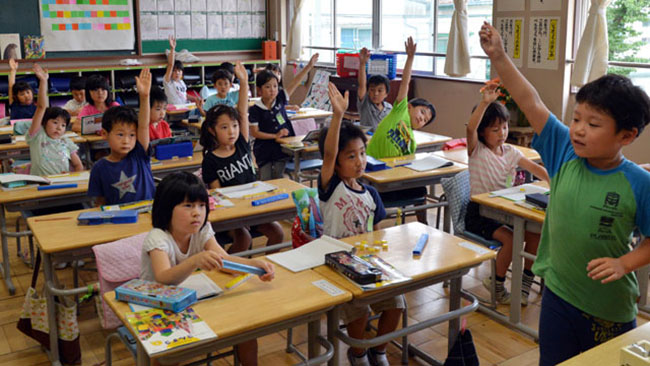
A famous one called the Kanazawa Library opened in 1275 and remains open today as a museum. Rather than start new schools, however, the shogunate established several major learning centers that contained libraries open to scholars and members of the priesthood. As for the shogunate and the ruling families, there continued to be educational opportunities unavailable to commoners. Schooling revolved around the warrior's home, the estate of his lord, and the local temples. A departure from the aesthetics of the Heian Period, the medieval education for warriors included training in weaponry and horseback riding-while still teaching young samurai the importance of good manners and knowledge of their culture. With the rise to power of the bushi (warrior class, made up of samurai) and the shogun (chief lord and military dictator), education in the cities and countryside added skills for warfare to the religious training. Medieval Period: During the Kamakura Period (1185-1333) and the Muromachi Period (1333-1573), Japanese education paralleled the militarism of the times. His private academy, the Shugei Shuchiin, did not exclude the lower classes and promoted the personal, moral, spiritual, and intellectual development of its students. Kukai's central role in the history of Japanese education is evidenced by his having invented Kana, the Japanese alphabet, and by his effort to establish a school that addressed the needs of commoners, a group not enrolled in the Daigakuryo or the kokugaku. Koya, which became the educational center for Shingon Buddhism. Saicho's friend and rival, Kukai, established a monastery on Mt. Besides being the center during the Heian Period for educating monks in the Tendai sect of Buddhism, it became a focal point for Japanese religious education for hundreds of years. Saicho established the Enryakuji Temple at Mt. Two of the most prominent figures in religious education were Saicho (767-822) and Kukai (774-835). Thus education and religion were intertwined during the ancient period. After completing their training, priests became the primary means for providing education to those who were not among the aristocracy. Education also continued to take place in the Buddhist temples, both in the capital and in the provinces. Such refinements were of course reserved for those privileged to be educated in the court. Perhaps more than any other time in Japanese history, this period placed the highest value on the ideal of courtly love through the medium of poetry, music, visual art, calligraphy, and dance. However, the curriculum of the Daigakuryo made a transition from Confucianism to the arts, reflecting the great emphasis on aesthetics during the Heian Period. Besides teaching the Chinese classics, these early provincial schools provided training in medicine and in divination.ĭuring the Heian Period (794-1185 A.D.), the height of Japan's aristocratic age, educational institutions continued to be focused on the nobility and were located in the capital of Kyoto.
Japan schooling system code#
The Taiho Code also called for establishing colleges called kokugaku, located in each of the country's provincial areas. When they graduated, they were placed in government positions at levels that corresponded to their success at the university. Young men usually entered the university in their early to mid-teens. Later the school became an official institution under the Taiho Code of 701. Located in the capital of Kyoto, the Daigakuryo focused mainly on providing prospective government officials with a background in Confucian practice that would relate to their future jobs. The first real school, the Daigakuryo (the university), was started by Emperor Tenji during this period. At that time only the aristocracy had access to education through schools that primarily taught Confucianism and Buddhist thought and practice. The Ancient Period: Formal education in Japan started when the Chinese language system was introduced into Japan in about 500 A.D. But the Japanese educational system does satisfy the needs of the vast majority of the population and has helped the nation compete on the international scene for over 100 years. Because many parents believe public school fails to prepare students adequately, they send their students to juku (private academies), after school and on weekends, to prepare for the next level within or beyond the public school system. Also, the system has been criticized for focusing too much on test-taking and not enough on critical-thinking skills. For example, minorities such as the native Ainu and the Korean-Japanese still do not participate adequately in the educational system.


Despite its overall exemplary record in education, Japan does face some serious challenges in the new century.


 0 kommentar(er)
0 kommentar(er)
